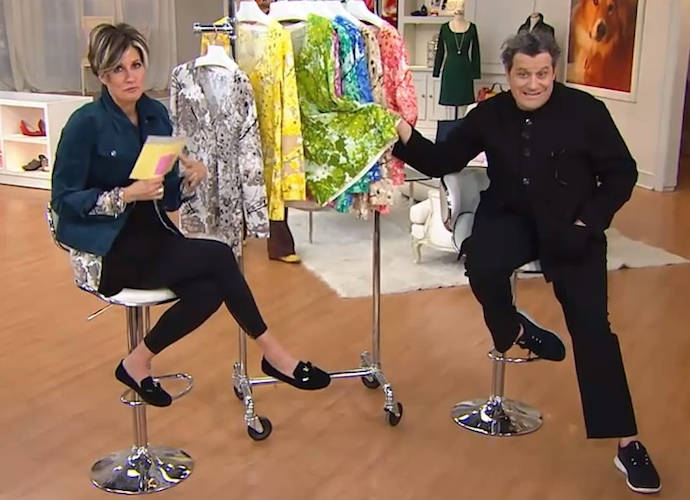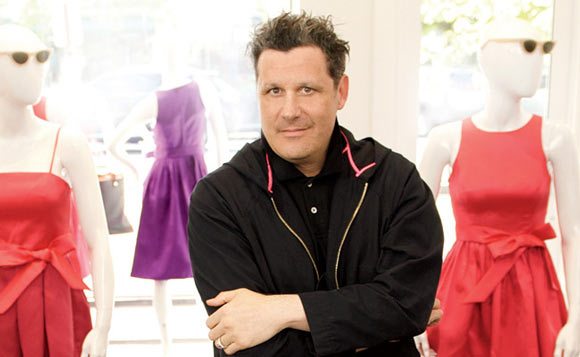Charles Busch is not the boy next door.
He’s not the girl next door either.
What he is is a legendary drag performer who has proven throughout the decades that he is a damn good writer… think Vampire Lesbians of Sodom, The Lady in Question, Red Square on Sunset, Psycho Beach Party, Die Mommie Die!
Now Busch has unleased Leading Lady: A Memoir of a Most Unusual Boy (Smart Pop Books, $27.95), an autobiography that’s fast and furious and funny, funny, funny and at times, sad, but not as sad as you will be when you’re on the last page.
The LGBTG+ icon takes us from Hartsdale, New York (with references to dead celebrity-studded Ferncliff, Westchester County’s take on Forest Lawn) to losing his mother to a damaged heart before he turned eight to his love of theatre (given to him by his father, a failed opera singer) to losing his virginity at sixteen to his colorful, outlandish friends and family members (including sisters Betsy and Margaret) to the onslaught of AIDS to being nominated for a Tony for The Tale of the Allergist’s Wife to his near-death experience to . . . well, you get the idea.
Busch is a rambunctious raconteur. There are no chapters, but dozens of short tantalizing time capsules. The book is a magnificent mosaic, crammed with so many delicious anecdotes that blindingly shine and rival any cubic zirconia jewel Joan Rivers sold during her QVC career. The gems will have you laughing and crying, though the emphasis is on laughing. The stories are sassy (this is where Claudette Colbert and Kim Novak come in); sinful (this is where Esther Williams and Michele Lee come in); sentimental (this is where Carol Channing and Stephen Sondheim come in) and (bitter)sweet (this is where Liza Minnelli and Valerie Harper come in).
Leading Lady is not the lugubrious diary of some displaced cross dresser who longs to tackle RuPaul; it’s the best (read: candid, honest) autobiography since Joan Rivers’ Enter Talking. Joan pops up several times, beginning on page one. “Joan was the most prominent in a long line of smart, bigger-than-life mother figures I’ve attached myself to,” he writes. “All my life I’ve been in search for a maternal woman whose lap I could rest my head on.”
His life was guided, perhaps sometimes misguided, by his mother’s oldest sister, Aunt Lil Blum, who Busch saw as an Auntie Mame and whose ritzy Park Avenue apartment is where he lived as a teen. Aunt Lil had faith in her nephew since Day One and began taking him to Broadway shows when he was nine years old. “Some, like the talky and sexually explicit John Osborne British drama Inadmissible Evidence, were a bit of an intellectual stretch for a third grader, but Aunt Lil never explained anything to me. There was the assumption that I’d either figure it out or let it pass over my head,” he writes.
Busch cannot remember not wanting to be on stage. “I was desperate to be a child star, but my ambitions were always foiled,” he writes. He recalls auditioning for a Yonkers, New York community theater production of Oliver! — losing the role after five auditions. “In the end, they cast some dreadful butch child without a shred of sensitivity.”
It was Aunt Lil who sent Busch to acting school on Saturdays; he recalls the very first lesson. “The teacher taught us how to make an entrance down a staircase wearing a gown with a long train without ever looking down at our feet—a skill that has proved invaluable in my career in the theater.” Ironically, Aunt Lil never saw Busch on stage in drag. “I’d be worried that the audience might not like you or be unkind,” he recalls she told him.
Aunt Lil supported him when Busch needed the money; before fame hit, part-time jobs usually didn’t work out. Busch acknowledges that in so many ways that she was the one who nourished his dreams, especially before he discovered his gift for writing plays and making a living as a male actress.
Busch witnessed Aunt Lil’s decline for eight years. Her death crumbled him. “Entering the hospital room . . . I climbed onto the bed, snuggling next to her, and buried my face in her long beautiful grey hair,” he writes. “Thank you. Thank you. Thank you. Thank you. . . I had so much to thank her for. She had saved my life. She made everything possible. . . . Everything leads me to Aunt Lil.”
The end of Aunt Lil, but not the end of Leading Lady. Even with all the sissified innuendos and campy asides, the book ends up centering around love: love of theatre, of film, of family, of friends and ultimately love of oneself. To give away much more is to give away the heart and soul of the book. Read it, wander off to the 24 pages of (mostly) color photos, then roam back into Busch’s valentine of memories and magic, vim and vitality.




